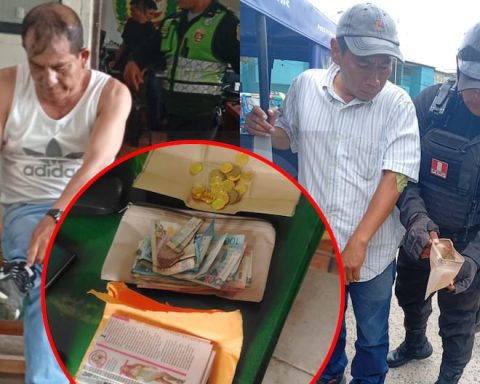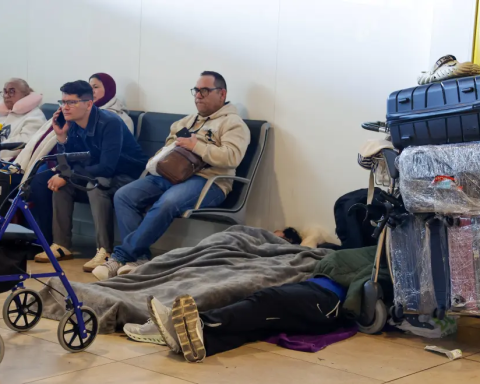About four years ago, the pilot program for the admission of domestic workers to social security was launched; in 2022 it was approved as compulsory and 9 out of 10 workers —almost all women— in this group are still in the informal sector.
In Mexico there are 2.5 million domestic workers, of which 2.25 million are women and almost 250,000 are men, according to the latest update of the National Occupation and Employment Survey (ENOE) from Inegi.
Most of the women who work for pay in homes carry out cleaning, organization and care activities. The men do gardening, plumbing or are private drivers.
But in this universe of workers there are many realities and the one that is most shared is that of labor vulnerability. Despite the enormous efforts of domestic workers and their collective organization, 95% of domestic workers are still without social security and 70% have incomes of just one minimum monthly wage.
The implementation of this pilot program and other complementary public policies could be one of the reasons why the affiliation of domestic workers to the IMSS has stagnated, but the diversity of situations and conditions they face could also complicate the panorama.
“Estefi —her employer— did tell me that if she wanted, she would put me in the IMSS, she explained everything to me well and we reviewed together that she had to pay a fee and I had to pay a fee, I asked her if she could give me that increase, because I had already been with her for three years and she had never raised my salary,” says Gabriela Pérez, 43, a resident of the Valle de Chalco municipality in the State of Mexico.
interviewed by The Economist, Gabriela says that many of her neighbors, whom she knows from her neighborhood and who are also domestic workers, have chosen to look for this alternative. “Having the insurance is fine for the doctor, but in my house what we need most is the money, because we are up to date and a little more makes a difference.”
Carmen, for her part, has a totally different perspective, her husband got sick some time ago and became unemployed, losing his affiliation to the IMSS (Mexican Institute of Social Security). With her family savings and Carmen’s work in different homes, they were able to pay for the first months of doctors and medicine, but over time it got complicated.
“I was completely unaware that one could join the insurance, they never offered it to me, without hesitation I would have accepted, to insure my husband and maybe we would be in a different situation now,” Carmen says. Her husband passed away two months ago; She just asked her employer to start the enrollment process and she is convinced that the contribution she will have to make is worth it because she and her youngest daughter will have access to health services.
Carmen lives near the exit to the Mexico-Cuernavaca highway, south of Mexico City, it takes almost two hours to get to her workplace in the Roma and Del Valle Centro neighborhoods. And pretty much the same thing back. She assures that now, that she is in the middle of the process, she has found more complexities.
“I, for example, work in four different houses and with Rodrigo and Gaby —two of their employers— it is being more difficult, because they did not know anything about the procedure either, they ask me if it is a contract for everyone, or one for each employer and how they have to do the paperwork and how the fees are paid, and the truth is that I don’t know either. The good thing is that one of the girls I work with agreed to talk to them to explain to them because if not, that would have been the insurance thing,” says in interview.
In Mexico, some organizations such as the Support and Training Center for Domestic Employees (CACEH) and the National Union of Domestic Workers (Sinactraho) have done enormous work to make domestic work visible and win the rights of those who deal with it. in these activities. Despite this, the challenges are still great, not only in access to information for the workers themselves, but also for their employers.
The story of Angélica and Tania is different, they are first cousins, they are 16 and 20 years old and they came from Orizaba, Veracruz to Mexico City to replace their aunt and one of their companions in the house where they worked for nearly 30 years. . “My aunt called Tania first because they were looking for just one more, but then they said there were two and without thinking I decided to come too,” says Angélica interviewed by The Economist.
“Before coming, my aunt told us the salary, more or less the days off and the things we had to take care of when we left here in the city and also that we see everything from work with Mrs. Elena, with her husband almost not,” he says.
They only found out about the IMSS affiliation after four months of working, because the family’s driver told them, but they say they don’t know how to ask their employer, and their employer doesn’t spend much time at home. “It’s that in this job everything is already unsaid, they don’t ask much. I don’t think they get angry because with other things they are very respectful, but better that way.”
Tania and Angélica live in the house where they work, modality “A” indicated in the suggested labor contract, where both parties have to indicate the specific activities to carry out, the salary broken down in monetary and kind, the frequency of payments and the duration and times of the working day. But they have not agreed to any of this with their employers, neither in writing nor in word.
The wide diversity of situations faced by domestic workers is another aspect to consider for those who make public policy; Although the majority share labor vulnerability, it affects them in very different ways.
Another notable aspect among the testimonies of domestic workers is the obstacles in communication. Making household work visible, its importance, the labor rights that accompany it and the ways to make them valid have fallen short; they do not reach all domestic workers and neither do they reach all employers.
















